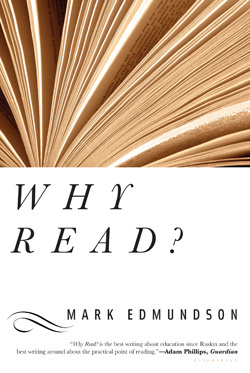THE BURGUNDIAN NETHERLANDS
THE LAST DUKE OF the ancient Capetian house of Burgundy dying in 1361 without heirs male, the duchy fell into the possession of the French crown, and was by King John II bestowed upon his youngest son, Philip the Hardy, Duke of Touraine, as a reward, it is said, for the valour he displayed in the battle of Poictiers. The county of Burgundy, generally known as Franche-Comt, was not included in this donation, for it was an imperial fief; and it fell by inheritance in the female line to Margaret, dowager Countess of Flanders, widow of Count Louis II, who was killed at Crcy. The duchy and the county were soon, however, to be re-united, for Philip married Margaret, daughter and heiress of Louis de Male, Count of Flanders, and granddaughter of the above-named Margaret. In right of his wife he became, on the death of Louis de Male in 1384, the ruler of Flanders, Mechlin, Artois, Nevers and Franche-Comt. Thus the foundation was laid of a great territorial domain between France and Germany, and Philip the Hardy seems from the first to have been possessed by the ambitious design of working for the restoration of a powerful middle kingdom, which should embrace the territories assigned to Lothaire in the tripartite division of the Carolingian empire by the treaty of Verdun (843). For this he worked ceaselessly during his long reign of forty years, and with singular ability and courage. Before his death he had by the splendour of his court, his wealth and his successes in arms and diplomacy, come to be recognised as a sovereign of great weight and influence, in all but name a king. The Burgundian policy and tradition, which he established, found in his successors John the Fearless (murdered in 1419) and Johns son, Philip the Good, men of like character and filled with the same ambitions as himself. The double marriage of John with Margaret, the sister of William VI of Holland, and of William VI with Margaret of Burgundy, largely helped forward their projects of aggrandisement. Philip the Good was, however, a much abler ruler than his father, a far-seeing statesman, who pursued his plans with a patient and unscrupulous pertinacity, of which a conspicuous example is to be found in his long protracted struggle with his cousin Jacoba, the only child and heiress of William of Holland, whose misfortunes and courage have made her one of the most romantic figures of history. By a mixture of force and intrigue Philip, in 1433, at last compelled Jacoba to abdicate, and he became Count of Holland, Zeeland and Hainault. Nor was this by any means the end of his acquisitions. Joanna, Duchess of Brabant (1355-1404) in her own right, was aunt on the mothers side to Margaret of Flanders, wife of Philip the Hardy. Dying without heirs, she bequeathed Brabant, Limburg and Antwerp to her great-nephew, Anthony of Burgundy, younger brother of John the Fearless. Anthony was killed at Agincourt and was succeeded first by his son John IV, the husband of Jacoba of Holland, and on his death without an heir in 1427, by his second son, Philip of St Pol, who also died childless in 1430. From him his cousin Philip the Good inherited the duchies of Brabant and Limburg and the marquisate of Antwerp. Already he had purchased in 1421 the territory of Namur from the last Count John III, who had fallen into heavy debt; and in 1443 he likewise purchased the duchy of Luxemburg from the Duchess Elizabeth of Grlitz, who had married in second wedlock Anthony, Duke of Brabant, and afterwards John of Bavaria, but who had no children by either of her marriages. Thus in 1443 Philip had become by one means or another sovereign under various titles of the largest and most important part of the Netherlands, and he increased his influence by securing in 1456 the election of his illegitimate son David, as Bishop of Utrecht. Thus a great step forward had been taken for the restoration of the middle kingdom, which had been the dream of Philip the Hardy, and which now seemed to be well-nigh on the point of accomplishment.
The year 1433, the date of the incorporation of Holland and Zeeland in the Burgundian dominion, is therefore a convenient starting-point for a consideration of the character of the Burgundian rule in the Netherlands, and of the changes which the concentration of sovereign power in the hands of a single ruler brought into the relations of the various provinces with one another and into their internal administration. The Netherlands become now for the first time something more than a geographical expression for a number of petty feudal states, practically independent and almost always at strife. Henceforward there was peace; and throughout the whole of this northern part of his domains it was the constant policy of Philip gradually to abolish provincialism and to establish a centralised government. He was far too wise a statesman to attempt to abolish suddenly or arbitrarily the various rights and privileges, which the Flemings, Brabanters and Hollanders had wrung from their sovereigns, and to which they were deeply attached; but, while respecting these, he endeavoured to restrict them as far as possible to local usage, and to centralise the general administration of the whole of the pays de par de (as the Burgundian dukes were accustomed to name their Netherland dominions) by the summoning of representatives of the Provincial States to an assembly styled the States-General, and by the creation of a common Court of Appeal.
The first time the States-General were called together by Philip was in 1465 for the purpose of obtaining a loan for the war with France and the recognition of his son Charles as his successor; and from this time forward at irregular intervals, but with increasing frequency, the practice of summoning this body went on. The States-General (in a sense) represented the Netherlands as a whole; and it was a matter of great convenience for the sovereign, especially when large levies of money had to be raised, to be enabled thus to bring his proposals before a single assembly, instead of before a number of separate and independent provincial states. Nevertheless, it must be borne in mind that the States-General had, as such, no authority to act on behalf of these several provincial states. Each of these sent their deputies to the General Assembly, but these deputies had to refer all matters to their principals before they could give their assent, and each body of deputies gave this assent separately, and without regard to the others. It was thus but a first provisional step towards unity of administration, but it did tend to promote a feeling of community of interests between the provinces and to lead to the deputies having intercourse with one another and interchanging their views upon the various important subjects that were brought before their consideration. The period of disturbance and the weakening of the authority of the sovereign, which followed the death of Charles the Bold, led to the States-General obtaining a position of increased importance; and they may from that time be regarded as forming a regular and necessary part of the machinery of government in the Burgundian Netherlands. The States-General however, like the Provincial States, could only meet when summoned by the sovereign or his stadholder; and the causes for which they were summoned were such special occasions as the accession of a new sovereign or the appointment of a new stadholder, or more usually for sanctioning the requests for levies of money, which were required for the maintenance of splendid courts and the cost of frequent wars. For not only the Burgundian princes properly so-called, but even Charles V, had mainly to depend upon the wealth of the Netherlands for their financial needs. And here a distinction must be drawn. For solemn occasions, such as the accession of a new sovereign, or the acceptance of a newly appointed governor, representatives of all the provinces (eventually seventeen) were summoned, but for ordinary meetings for the purpose of money levies only those of the so-called patrimonial or old Burgundian provinces came together. The demands for tribute on the provinces acquired later, such as Gelderland, Groningen, Friesland and Overyssel, were made to each of these provinces separately, and they jealously claimed their right to be thus separately dealt with. In the case of the other provinces the States-General, as has been already stated, could only grant the money after obtaining from each province represented, severally, its assent; and this was often not gained until after considerable delay and much bargaining. Once granted, however, the assessment regulating the quota, which the different provinces had to contribute, was determined on the basis of the so-called








